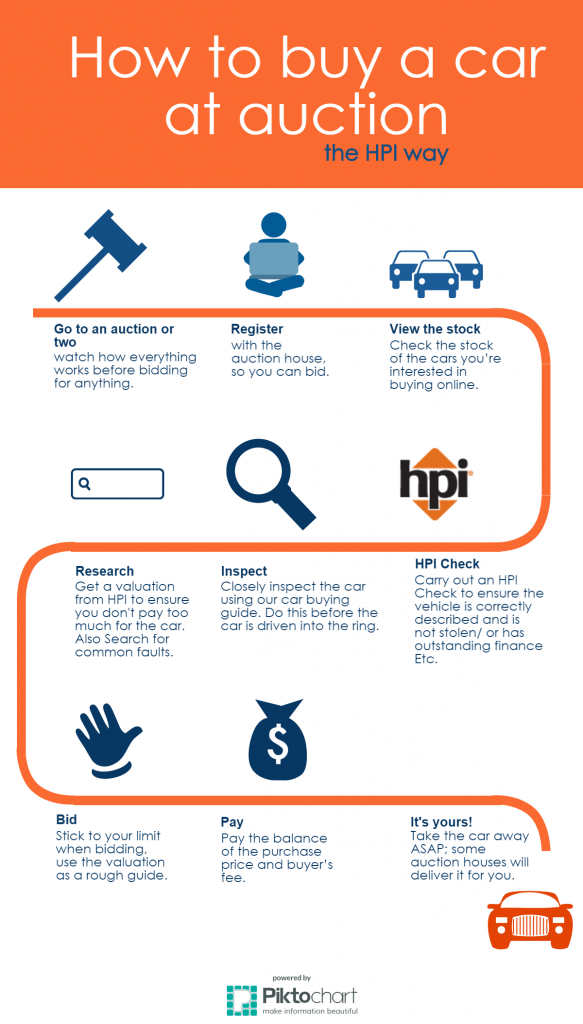How To Buy A Car At Auction
For decades, buying at auction has been the cheapest way of snapping up a used car bargain, but many buyers are put off because they think they’ll end up paying too much, or buying a heap. After all, you’d only put a car into the auction ring if it’s too riddled with faults to sell it on a forecourt, wouldn’t you?
Not necessarily, as car auctions are all about volume. Companies disposing of fleets have to shift a lot of cars very quickly; there simply isn’t the time to prepare and advertise them, then put them on a forecourt and wait for them to sell. Through the various auctions around the UK, thousands of cars are sold every week; it would take far too much time to sell them individually.
A lot of people are intimidated by the thought of buying at auction, because they’ll be competing with professional traders. That’s why going to one or two auctions as a spectator is essential. It’ll give you a feel for how things work and how much you should be paying; the pace is pretty fast and it’s easy to miss vital pieces of information if you’re not careful. All the cars are sold as seen, although some go into the ring with faults disclosed, so you must take in what the auctioneer is saying.
Most auction houses operate on this sold-as-seen basis; the key thing is to check the terms and conditions before bidding. You’ve generally got just an hour to flag up any key faults, but even then, action will only be taken if the car has been misdescribed. It’s up to you to check the condition of the bodywork, tyres, interior trim and wheels. Also, because the car has to be driven into the ring you’ve got a chance to see whether the engine smokes, the exhaust is blowing, the gearbox is noisy plus if there are any starting or running issues.
To help buyers, the National Association of Motor Auctions has come up with a grading system that indicates how good a car is . Every car that goes into the ring is analysed as a matter of course before it’s sold, with a grade 1 car ready to retail while a grade 5 needs a fair bit of work.
If you know nothing about cars you need to take someone along who is more clued up. Buy something with a full service history, but if you do buy a complete lemon, you should still have some protection. If the car is sold with outstanding finance, is a cut and shut or in some way dangerous , there should be some comeback – but there is a very simple way of protecting yourself. Instead of looking at the car, look at who is selling it. In many cases the car will be sold by a leasing company and you’ll probably be the second owner. It’s not in the interests of the leasing company to do anything underhand, so while the car may have faults, they shouldn’t be dangerous.
Don’t be afraid of a high mileage car either; many lease cars are ex-company vehicles which will have been serviced on the button. Not all cars are sold by lease companies though; many are from dealers, offloading part exchanges that aren’t suitable for retailing on the forecourt – and you have to ask yourself why.
When it’s time to start bidding for a car, stick to your limit, but remember that you might also have to pay a buyer’s fee, typically of around eight per cent. If yours is the last bid before the hammer comes down, it may still be below the reserve, if there is one; this is called a provisional sale. All is not lost though; the auction house will negotiate with the seller on your behalf and if you’re not far off the reserve, a deal may still be possible.
Once you’ve bought a car you’ll need to get it home. Some auction houses will deliver or you can leave it on-site to collect it soon after. Take the latter route and you may have to pay storage fees though. Also bear in mind that some cars come without a V5C, so you’ll have to get a replacement. By the time you’ve got the car registered in your name and taxed so it can be used on the road, six weeks may have slipped by. Which should be just about long enough to count up all the money you’ll have saved – as long as you’ve done everything right.
In a nutshell
- Go to an auction or two to watch how everything works before bidding for anything.
- Register with the auction house, so you can bid.
- View the stock online and home in on the cars you’re interested in buying.
- Research the values and key faults of the cars you might buy.
- Go to the auction, ready to buy, and remember to take some photo ID with you.
- Closely inspect the cars you’re considering, before they’re driven into the ring.
- Stick to your limit when bidding, and if nobody else is bidding, ask yourself why.
- If your bid is successful, you’ll need to pay for the car; cash and credit cards may attract fees while a debit card, a cheque or a banker’s draft shouldn’t.
- Take the car away ASAP; some auction houses will deliver it for you.




